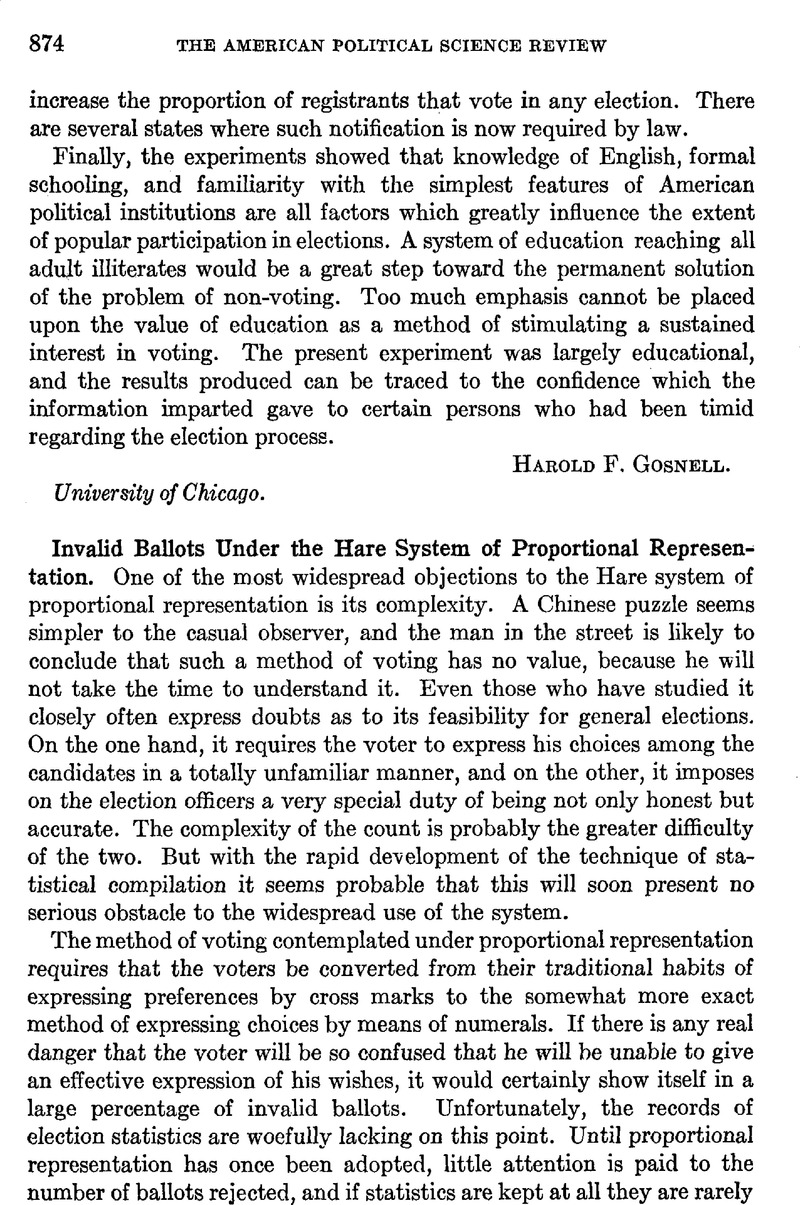Published online by Cambridge University Press: 01 August 2014

1 This table has been compiled from “Local Impressions on P. R. in American Cities,” Proportional Representation Review, April, 1924, 60–85. For supplementary information I am indebted to Mr. George H. Hallett, Jr., of the Proportional Representation League.
2 The following explanations may be useful:
“2 ‘x’s” includes all ballots rejected because more than one name had a cross mark opposite it.
“2 ‘1’s” includes all ballots rejected because more than one name had a first choice indicated opposite it.
“‘x’ and ‘1’” includes ballots with a first choice and a cross opposite different names.
“No. ‘1’ marked” includes ballots having numbers marked but no first choice indicated. See Exhibit I, number 19.
“Ink, colored or indelible pencil” includes all ballots rejected because not marked with the official election pencil provided by the board.
“‘Yes’ or ‘No’” refers to ballots containing writing indicating that the voter was in favor of or opposed to certain candidates.
“Mark on line” includes all cases where the first choice mark (“x” or “1”) was on the line between candidates so that it was impossible to tell which candidate was intended.
“‘x’ and ‘1’ in same square” includes only ballots with both of these marks opposite the same candidate.
“Check (✓)” includes all ballots marked with other marks than a cross, a figure, or a minus, except those having a completely illegible mark.
“Minus— ‘–’” includes ballots having a horizontal line in the box opposite the name.
“Other” Invalid ballots includes largely the illegible and those invalid because written on. See below.
“Erasure” did not invalidate a ballot unless it left it in such a condition that the voter's wish could not be discovered.
“German 1” is a figure “1” with a hook on it. It was found that this was easily confused with a “7”. Where it was possible to distinguish between them the ballot was declared valid.
“Figure out of box” and “Marked on both sides of names” both refer to ballots on which the voter had placed numbers elsewhere than in the place regularly provided for them.
“Written name” did not invalidate the ballot even though it was written over a printed name which had been scratched out.
3 Nearly six per cent of the ballots declared void would have been found invalid under any scheme of voting. This includes those marked in ink, colored, or indelible pencil, those with “yes” or “no” written opposite the names, and those marked with a check or minus sign. Probably part of the ballots classed as invalid for other reasons would have been rejected under the old ward plan.
Comments
No Comments have been published for this article.